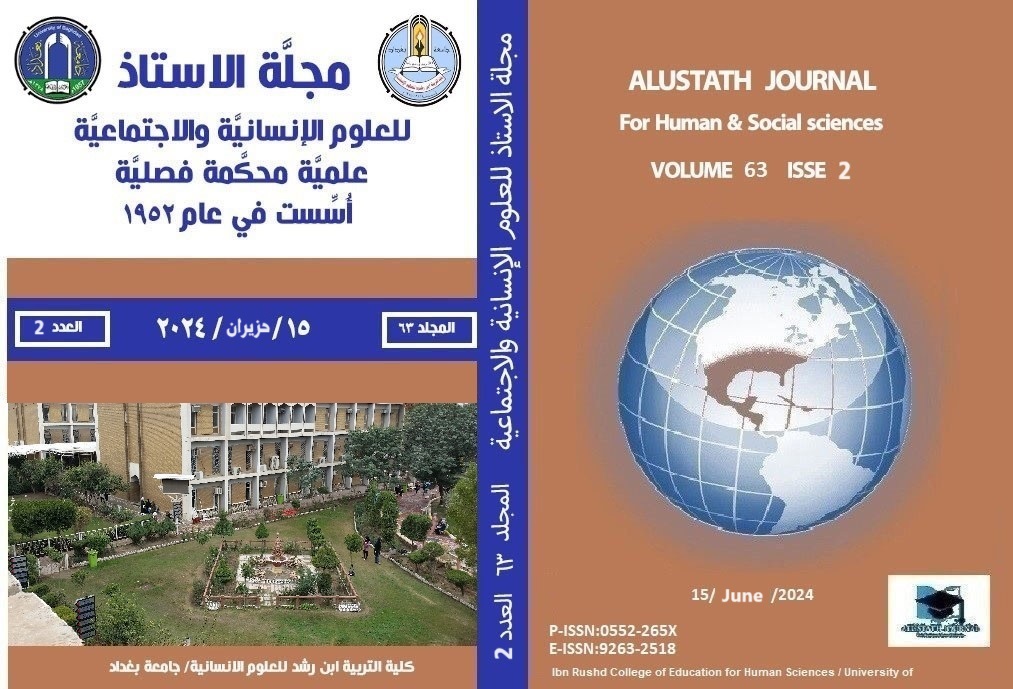A Dysphemistic Approach to the Study of Textual Cyberbullying in Social Media
DOI:
https://doi.org/10.36473/aerdmv05Keywords:
cyberbullying, dysphemism, textual cyberbullying, social mediaAbstract
Abstract
The current study is a dysphemistic approach to the study of textual cyberbullying in social media. Cyberbullying became, to an extent, widespread in social media interaction. The study aims at analyzing a sample of 6oo facebook comments taken from different news agencies and websites. The study believes that cyberbullying is used in order to reach certain end. The sample of the study consists of comments for six different topics. And 100 comments were taken for each of the six topics. The model of the study is Allan and Burridge's (1991) which classifies dysphemism into eight types. The process of analysis is carried out by taking the function, that cyberbullying can achieve, into consideration. The findings of the study reveal that the three functions that reported the highest ratio of occurrence are 'showing anger', 'emphasizing something' and 'representing bad condition'.
Downloads
References
References
Abbas, Amthal, M. and Kudhayir, Shaqi, I. (2016). Multi-Functionality of Impoliteness in Professional Discourse with Special Reference to Translation. Journal of Research Diyala, Volume, Issue 71, Pp 261-638.
Allan, K. and Burridge, K. (1991). Euphemism and Dysphemism: Language Used as Shield and Weapon, New York: Oxford University Press.
Allan, K. and Burridg, K. (1988). Sex-Related Euphemism and Dysphemism. An Analysis in Terms of Conceptual Theory. www.google. com.
------------------- (2003). Language and Power: Euphemism and Dysphemism www.google.com.
------------------ (2006). Forbidden Words: Taboo and the Censoring of Language. Cambridge: Cambridge University Press.
------------------ (2009). Natural Language Semantics. Oxford & Malden MA: Blackwell. www.google.com.
Anderson, Jenn, Bresnahan, M. and Musatics, C. (2014). "Combating Weight-Based Cyberbullying on Facebook with the Dissenter Effect." Cyberpsychology, Behavior, and Social Networking: 281-86.
Culpeper, J. (1996). "Towards an anatomy of impoliteness". Journal of Pragmatics. 25: 349-367.
Fernández, C. E. (2006). Euphemistic Strategies in Politeness and Face Concerns. Pragmalinguistica, 13, 77-86. Doi:http://dx.doi.org/10.25267/.i13.05.
---------------------- (2015). Sex in Language: Euphemistic and Dysphemistic Metaphors in Internet Forums. Bloomsbury Academic: 978-1472-59652-9
Gibbons, B. J. (2014). Avoiding confrontation through euphemism. Across the Board, 38(March/April). P. 68.
Harris, Linda, Kenneth Gergen and John Lannaman, (1986). "Aggression Rituals". Communication Monographs. 53: 252-265.
Hinduja, S., and Patchin, J. W. (2008). Cyberbullying: An exploratory analysis of factors related to offending and victimization. Deviant Behavior, 29(2), 1–29.
Labov, William, (1972). Language in the inner city: Studies in the black English vernacular. Oxford: Blackwell.
Lowth, Mary (2019). Anger Management, Rev. John Cox https://patient.info/mental-health/anger-management
MacKay, W. (2013). Respectful and Responsible Relationships: There’s No App for That (The Report of the Nova Scotia Task Force on Bullying and
Cyberbullying), Available at SSRN: https://ssrn.com/abstract=2123494
Power, A., Keane, A., Nolan, B., and O’Neill, B. 2017. “A Lexical Database for Public Textual Cyberbullying Detection”. Special issue of Revista de lenguas para fines específicos, entitled New Insights into Meaning Construction and Knowledge Representation.
Ruiz, H. J. (2009). Understanding Tropes: At the Crossroads Between Pragmatics and Cognition. Germany: Peter Lang GMBH. P..56
Singhal, P. and Bansal, A. (2013). Improved Textual Cyberbullying Detection Using Data MiningInternational Journal of Information and Computation Technology. Vol. 3, No. 6. pp. 569-576.
Warren, B. (1992). What dysphemism tell us about the interpretation of words. Studia Linguistica, 46(2), 128-172.
Weiss, M. L. (2014). New media, new activism: trends and trajectories in Malaysia, Singapore and Indonesia. International Development Planning Review, 36(1), 91-109. doi:10.3828/idpr.2014.6
Zimmermann, Klaus (2003). "Constitución de la identidad y anticortesía verbal entre jóvenesmasculinoshablantes de español". In D. Bravo (ed.), La perspectiva no etnocentrista de la cortesía: Identidad sociocultural de lascomunidadeshispanohablantes. EDICE program. www.edice.org, pp. 47-59.









